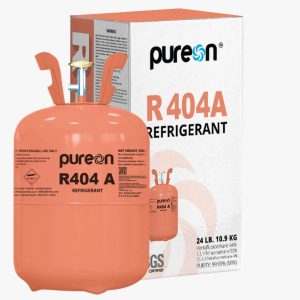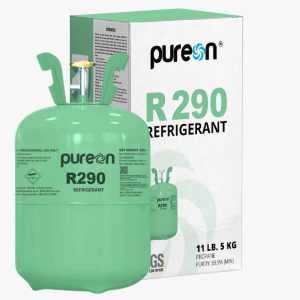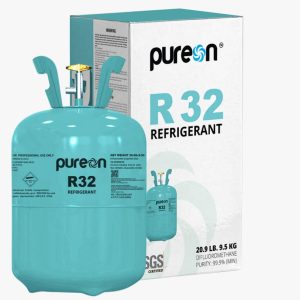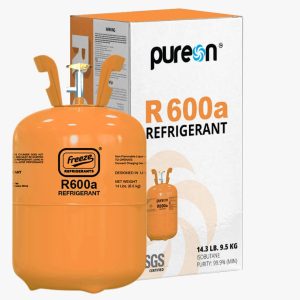Description
Overview of R-407C Refrigerant
R-407C is a hydrofluorocarbon (HFC) blend refrigerant designed as a drop-in replacement for ozone-depleting R-22 in existing air conditioning and heat pump systems. Introduced in the 1990s, it offers a transitional solution for retrofitting older equipment while balancing performance and environmental compliance. However, its moderate Global Warming Potential (GWP) and regulatory phase-down have spurred adoption of newer, lower-GWP alternatives.
Key Features & Benefits
- Environmental Profile:
- Zero Ozone Depletion Potential (ODP): Safe for the ozone layer.
- Moderate GWP: With a Global Warming Potential of 1,774, R-407C is less climate-damaging than R-404A but still faces regulatory restrictions under global HFC phase-downs.
- Performance:
- Zeotropic blend (R-32/125/134a in 23%/25%/52% ratios) with a temperature glide (~7°C), requiring careful charging to avoid composition shifts.
- Matches R-22’s cooling capacity in retrofitted systems, minimizing hardware modifications.
- Suitable for air conditioning, heat pumps, and medium-temperature refrigeration.
- Safety:
- Classified as A1/A1 (non-flammable, low toxicity) under ASHRAE standards.
Applications
R-407C is primarily used in:
- Retrofitting R-22 systems in residential and commercial air conditioning.
- Heat pumps for heating and cooling.
- Medium-temperature commercial refrigeration (e.g., supermarket chillers).
Safety & Handling
- Temperature glide: Must be charged as a liquid to maintain blend integrity.
- Compatibility: Requires POE (polyolester) lubricant instead of mineral oil for retrofitted R-22 systems.
- Leak management: Critical to prevent performance loss and environmental impact.
- Recovery and recycling: Mandatory under EPA Section 608 and EU F-Gas regulations.
Regulatory Compliance
- Global phase-down: Targeted under the Kigali Amendment and EU F-Gas Regulation due to its GWP.
- U.S. SNAP Program: Restricted in new equipment; endorsed only for retrofits and servicing existing systems.
- Alternatives: Newer refrigerants like R-454B (GWP 466) and R-32 (GWP 675) are replacing R-407C in modern installations.
Future Outlook
- Transitional role: R-407C remains viable for maintaining legacy systems but is not a long-term solution.
- Retrofitting focus: Technicians must prioritize leak detection and efficiency upgrades to extend system lifespan.
- Shift to low-GWP refrigerants: Industries are adopting alternatives like R-32, hydrocarbons (R-290), and HFO blends for new equipment.

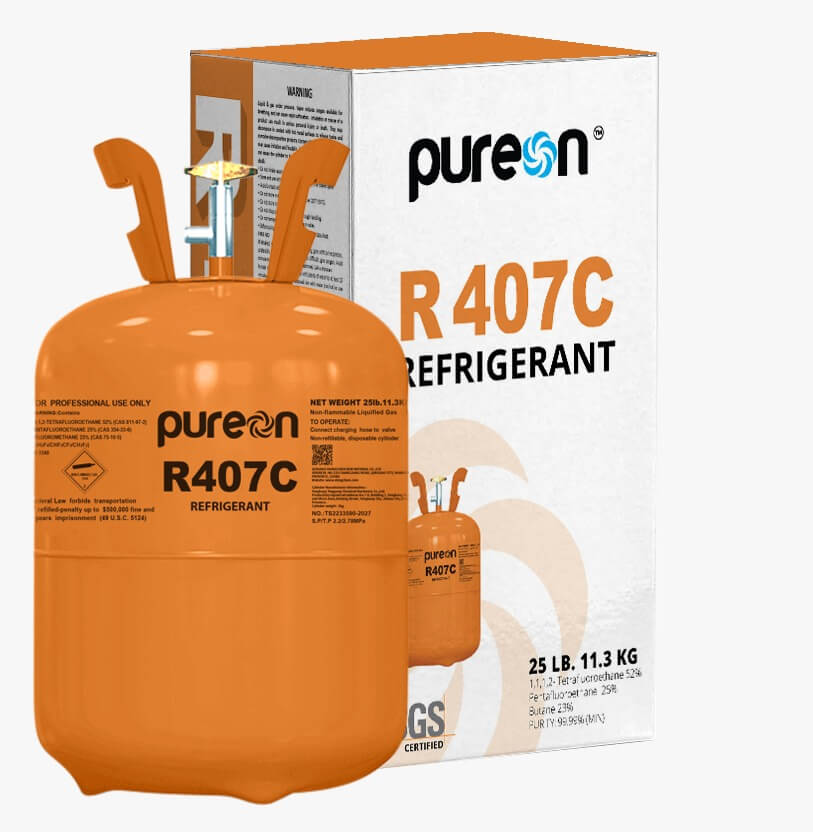
 Disposable Canisters
Disposable Canisters Refillable Cylinders
Refillable Cylinders Tonner
Tonner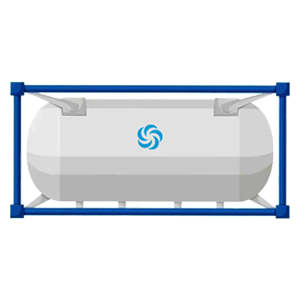 ISO Tank
ISO Tank